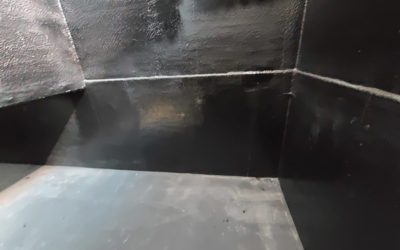In the world of piping, HDPE pipe is a relatively new addition. While it’s been around for years, some of the older players in the game like copper and cast iron have been around for much longer. You’re likely familiar with the more traditional pipe materials but may still have questions about HDPE pipe.
What is HDPE pipe? How long does it last? What are its applications? Keep reading for our answers to all your HDPE pipe questions.
What does HDPE stand for?
HDPE is an acronym for high-density polyethylene. High-density polyethylene is a polymer (a substance made of large molecules) that is thermoplastic, which means that it is malleable or moldable at high temperatures. HDPE is useful as a material because it is corrosion-resistant and has a high strength-to-density ratio.
HDPE is used in a variety of applications, not just in piping. Plastic bottles, house wrap, lawn furniture, plastic mailers, and even ropes and fabrics are made of HDPE. HDPE is cost-effective, making it desirable for a multitude of uses from playground equipment to fuel tanks.
What is HDPE pipe?
HDPE pipe is flexible, corrosion-resistant plastic pipe. It is generally lighter in weight and more cost-effective than metal pipe. HDPE pipe is joined by welding or fusing the plastic pipe sections together at heat, without jointing chemicals, rubber seals, anchors, or thrust restraint blocks.
Plastic pipe is impact resistant and is not susceptible to the same environmental stressors as ferrous pipe materials. It also has a high flow capacity and is resistant to many chemicals. In addition, its low thermal conductivity cuts down on the need to insulate HDPE pipe, as it maintains more stable fluid temperatures.
How is HDPE pipe manufactured?
HDPE pipe is manufactured by extrusion. The material is heated, then pushed through a mold that shapes the material into a length of pipe at the desired diameter. It is then cooled in stages by spraying the pipe with water or submerging it in water. HDPE generally contains carbon black, which provides it with UV resistance.
How is HDPE pipe installed?
HDPE pipe can be installed using standard pipelaying practices, as well as sliplining, horizontal directional drilling, and other cost-saving methods. HDPE pipe works well for trenchless installation.
What is HDPE pipe used for?
HDPE pipe is used in myriad applications, which include, but are not limited to:
- Water mains
- Sewer mains
- Stormwater drainage systems
- Irrigation
- Oil and gas pipelines
- Mining
- Firewater lines
- Electrical conduit
- Telecommunications conduit
- Agriculture
- Compressed air
- Chemical manufacture and transport
- Food manufacture and transport
- Ground-source geothermal systems
- Fertilizer
- Desalination plants
- Paper and pulp manufacture
- Hazardous materials
- Ocean cleanup
- Brine pipelines
How long does HDPE pipe last?
The typical benchmark for HDPE life expectancy is 50 years; however, per the Plastics Pipe Institute, HDPE pipe used in municipal potable water systems can have a lifespan of over 100 years. When compared with other traditional piping materials copper (40-75 year lifespan), cast iron (50-75 years), and galvanized steel (30-50 years), HDPE pipe demonstrates better longevity.
What temperatures can HDPE pipe withstand?
HDPE pipe can operate in temperatures ranging from -220° F to 140°F. Of pipe materials, HDPE does not have the highest temperature resistance, and it does have relatively high thermal expansion. However, for most applications, the temperature range that HDPE pipe can withstand is more than adequate.
What’s the difference between HDPE and PVC pipe?
While both HDPE and PVC are plastic pipes that are lightweight and resistant to chemicals and corrosion, there are a few important differences. The first is that while HDPE pipe is made of high-density polyethylene, which is derived from petroleum, PVC pipe is made of a vinyl, polyvinyl chloride. This results in different performance characteristics.
PVC pipe is generally stiffer than HDPE, and it is joined with sealants and not heat fusion. PVC also has better thermal performance, expanding significantly less..
HDPE, however, outperforms PVC for certain applications. PVC can only be installed via open trench or drop burial methods, whereas HDPE can utilize horizontal directional drilling, sliplining, and other methods. HDPE piping boasts leak-free joints, unlike PVC, and is generally more durable and suited to a greater range of uses.
Is HDPE pipe safe for drinking water?
Absolutely. HDPE pipe is water and food-safe and is used extensively in drinking water and food manufacturing and transport applications. NSF, an organization that develops public health and safety standards for drinking water, has debunked study results that suggest that HDPE and similar plastic pipe is hazardous for drinking water applications.
At US FUSION, we do HDPE piping like nobody else in the industry. With decades of experience, high-quality materials, and complete solutions for every situation, we’re your trusted source for pipe installation, fusion, and repair. Reach out to our team to learn more about our services.







